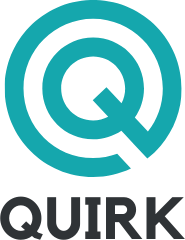
You’ve probably noticed how businesses maintain consistent online presences across multiple websites and platforms. Behind this seamless experience lies domain management—the systematic control and oversight of an organization’s domain name assets. It’s not just about buying a domain; it’s about protecting your digital front door. From preventing unauthorized transfers to configuring proper DNS settings, effective domain management safeguards your brand reputation and ensures your customers always find you online. But what happens when this critical function fails?
Key Takeaways
* Domain management is the process of registering, configuring, securing, and overseeing domain names that serve as web addresses.
* It involves setting up DNS records to direct traffic to websites and email services properly.
* Effective domain management includes monitoring expirations, implementing security measures, and conducting regular audits.
* Domain portfolio oversight protects brands from cybersquatting, phishing attempts, and domain impersonation.
* It requires using specialized tools for administration, security controls, and streamlined management of multiple domains.
The Fundamentals of Domain Management
Domain management involves several key components that are crucial for establishing and maintaining an online presence. A domain name serves as a unique web address that enables users to access a website through the Domain Name System (DNS).
Registering a domain name with a reputable registrar is essential, as it verifies domain ownership and ensures proper registration. Configuring name servers is also necessary to direct traffic to a website. Additionally, implementing domain security measures is vital to prevent unauthorized transfers and hijacking.
For individuals or organizations managing multiple domains, organizing domain portfolios efficiently is important to prevent expirations and minimize administrative burdens.
Professional corporate domain management services can help consolidate portfolios, enforce authorization procedures, and implement security measures like DNSSEC to protect against DNS attacks. Understanding these fundamentals is essential for effective domain management, as they provide the foundation for a stable and secure online presence.
Key Components of Effective Domain Portfolio Oversight
Effective domain portfolio oversight relies on a systematic approach to maintain control over online assets. This involves consistent monitoring of domain registrations, renewals, and expirations to prevent unauthorized changes.
Registering multiple domain extensions, such as .com, .org, and .net, is a key component of brand protection, as it helps prevent cybersquatting. Regular tracking of DNS records is necessary to ensure proper website and email functionality.
Implementing security measures, including domain locking and two-factor authentication, through domain registrars is also crucial. Periodic audits of the domain portfolio enable quick identification and correction of potential vulnerabilities in the domain name management system.
Common Threats and Vulnerabilities to Domain Security
Organizations face various threats to domain security, including cybersquatters registering similar domain names to sell them back at a profit.
Phishing websites and domain name spoofing are also concerns, as they can trick users into disclosing sensitive information.
Additionally, domain impersonation and counterfeit sellers can damage brand trust, with a notable number of disputes reported annually, such as the 5,752 disputes in 2023.
Failure to renew domain registrations can lead to unauthorized use of a brand, highlighting the importance of robust security measures.
Implementing domain locking and two-factor authentication can help prevent these threats and maintain control over digital identity.
Best Practices for Maintaining Domain Integrity
Maintaining domain integrity requires a multi-faceted approach to security. Registering multiple domain variations can help improve search engine rankings and prevent impersonation attempts. Implementing DNS security solutions, such as DNSSEC, is also crucial to protect nameservers from attacks that could lead to downtime or data breaches.
Using domain privacy services during the registration process can help shield personal and organizational information from public disclosure through the WHOIS database. Regular domain audits and monitoring for similar domain names are essential to detect potential threats and take proactive measures. Additionally, enabling auto-renewal and domain locking can prevent accidental expiration and unauthorized changes to domain settings, thereby ensuring continuous security and integrity.
Tools and Services for Streamlined Domain Administration
Effective domain administration relies on utilizing appropriate tools. Most domain registrars provide control panels that enable management of domains, DNS settings, and security features within a single interface. These control panels often include automatic renewal reminders to prevent domain expirations.
Domain management is frequently integrated into the platforms of hosting providers, allowing for streamlined administration through unified interfaces. For individuals or organizations managing multiple domains, specialized services offering bulk management features are available. Security tools that include two-factor authentication and access controls are crucial for protecting digital assets. A well-chosen combination of these tools can create an efficient domain management workflow.
Key considerations for domain administration tools include the availability of robust control panels, automated renewal reminders, and integrated security features.
Hosting providers that offer unified interfaces for domain and hosting management can simplify administrative tasks.
Additionally, specialized services that provide bulk management capabilities and advanced security measures can be beneficial for managing complex domain portfolios.
Conclusion
You’ve now learned that domain management involves strategic oversight of your digital real estate. By implementing robust security practices, utilizing management tools, and staying vigilant against threats, you’ll protect your online presence and brand integrity. Don’t underestimate the importance of proactive domain administration—it’s crucial for maintaining business continuity and safeguarding your digital assets in today’s interconnected world.


